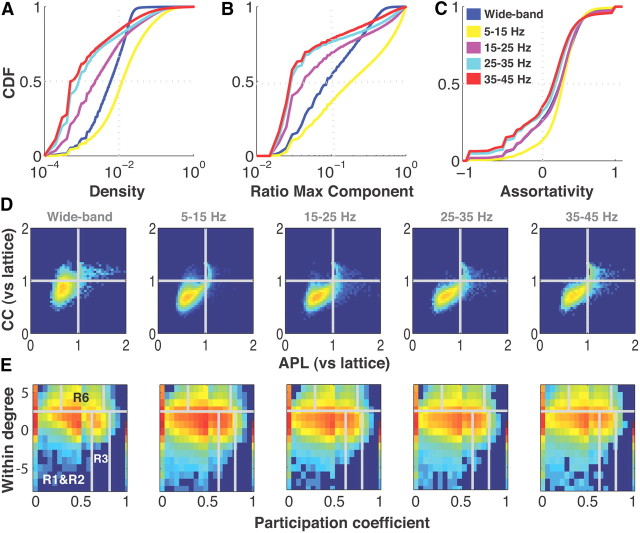Figure 2.
Structural characteristics of functional networks: sparse, fractured, and modular. A–C, The cumulative density functions (CDF) of density (A), size of maximum component (B), and assortativity (C). The low-frequency networks possess higher mean densities and larger maximum components than the high-frequency networks, and positive assortativities appear for all frequency bands. D, The scaled clustering coefficient (CC) versus scaled average path length (APL). The path lengths and clustering coefficients tend to be less than expected for a regular lattice. E, Within-module degree versus participation coefficient. The node roles consist of “peripheral nodes” (R1&R2), “nonhub connectors” (R3), and “connector hubs” (R6). In D and E, warm (cool) colors indicate higher (lower) proportions.

